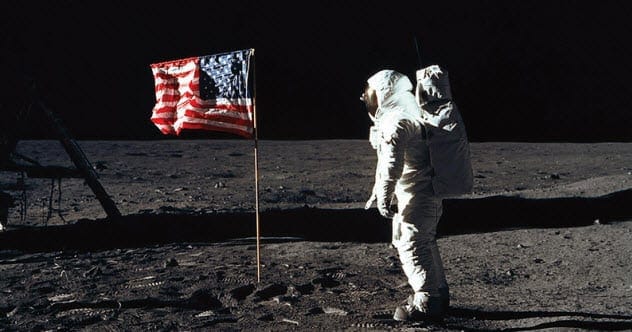We often see movies as a form of escape, a way to experience thrilling stories or laugh our worries away. Hollywood loves to tell us that films can change the world, but let’s be honest, it’s easy to be skeptical. Most movies entertain us, maybe make us think for a bit, and then we move on. But what if some films actually do more? What if a select few have managed to ripple out from the screen and create tangible changes in our reality? This list explores ten such groundbreaking films that have influenced laws, government actions, corporate behavior, and even the way we perceive our own lives. These aren’t just stories about pop culture trends; these are movies that truly left their mark on the world.
10. The Truman Show (1998)
Peter Weir’s imaginative film, The Truman Show, starring Jim Carrey, was a hit with both critics and audiences. It tells the story of Truman Burbank, a man who discovers his entire life is a meticulously crafted reality TV show broadcast to the world. While the film was a sharp commentary on our growing obsession with reality television, media manipulation, and corporate power, its impact went further than just social critique.
Soon after its release, psychiatrists Joel and Ian Gold noticed patients who believed their lives were secretly being filmed and broadcast, much like Truman’s. They dubbed this phenomenon “The Truman Show delusion.” While not yet an officially recognized medical condition, the increasing number of cases has opened discussions about how culture and media can influence our psychological state, showing the film’s unexpected reach into real-life mental health conversations.
9. Taxi Driver (1976)
Martin Scorsese’s dark and intense film, Taxi Driver, is considered a classic, known for pushing boundaries with its depiction of violence. Robert De Niro plays Travis Bickle, a troubled loner who becomes disturbingly obsessed. The film’s already controversial nature took a darker turn in 1981 when John Hinckley Jr. attempted to assassinate President Ronald Reagan.
Hinckley Jr. claimed his actions were inspired by Taxi Driver, specifically stating he wanted to impress actress Jodie Foster, mirroring a plot point in the film. This shocking event fueled intense debates about the connection between violence in popular culture and its potential influence on real-world actions. It remains a stark example of how a film’s narrative can be twisted and used in disturbing ways, prompting ongoing discussions about media responsibility.
8. 2001: A Space Odyssey (1968)
Stanley Kubrick’s masterpiece, 2001: A Space Odyssey, is celebrated for its stunning visuals and mind-bending story. Its special effects were so groundbreaking for their time that they looked incredibly realistic. This realism, combined with the film’s release just over a year before the actual moon landing, led to a peculiar real-world consequence: it fueled one of the 20th century’s most persistent conspiracy theories.
Some people became convinced that the moon landing was faked and that NASA had hired Kubrick to direct the whole thing, using the skills he demonstrated in 2001. Proponents of this theory even point to alleged clues in Kubrick’s later film, The Shining, as a supposed confession. While an outlandish theory, it shows how a film’s technical brilliance can inadvertently spark widespread public speculation and distrust.
7. JFK (1991)
Oliver Stone’s controversial film JFK explores the assassination of President John F. Kennedy through the eyes of prosecutor Jim Garrison. While many historians criticized the film for taking liberties with historical facts to support its conspiracy theories, its impact on public perception and government action was undeniable.
The film was a huge success and caused a massive surge in public belief that elements within the U.S. government, like the FBI and CIA, were involved in Kennedy’s death. The public outcry became so significant that it pressured President George H.W. Bush to sign the President John F. Kennedy Assassination Records Collection Act of 1992. This act mandated the release of previously classified documents related to the assassination, demonstrating a film’s power to influence government transparency, even if its historical accuracy is debated.
6. The Snake Pit (1948)
Based on Mary Jane Ward’s novel, The Snake Pit offered a harrowing look into the life of a woman in a mental institution. It was one of the first major Hollywood films to tackle the subject of mental illness with seriousness and depth, earning critical acclaim and an Oscar nomination for star Olivia de Havilland.
The film didn’t shy away from depicting the harsh realities of mental hospitals at the time, including staff abuse, inhumane conditions, and controversial treatments. The popularity and emotional impact of both the book and the movie played a significant role in sparking public awareness and advocating for reforms in mental health care. Many states across the U.S. saw changes in facility conditions, patient treatment protocols, and the overall approach to mental illness, highlighting cinema’s ability to drive social reform.
5. Scenes from a Marriage (1973)
Ingmar Bergman’s powerful miniseries (also released as a film), Scenes from a Marriage, provided an intimate and unflinching look at the breakdown of a marriage. It followed Marianne and Johan over a decade as their relationship unraveled due to insecurities, jealousy, and personal crises. The series was a massive cultural event in Sweden, watched by nearly half the population.
The impact was startling and direct. In the year following its release, divorce rates in Sweden reportedly surged to record highs. There was also a dramatic increase in couples seeking relationship therapy, with waiting lists growing substantially. Many viewers felt the series was so realistic it was like watching a documentary, prompting widespread introspection about marriage and relationships with tangible societal consequences.
4. Blackfish (2013)
The documentary Blackfish focused on Tilikum, an orca involved in the deaths of several people, including trainer Dawn Brancheau, while in captivity at SeaWorld. The film powerfully argued that the stress and unnatural conditions of captivity contributed to such tragedies. Its impact on SeaWorld and public perception of marine parks was swift and devastating.
Following the film’s release, SeaWorld faced widespread protests and a public relations nightmare. Attendance dropped significantly, and the company’s net income plummeted. Numerous entertainers canceled performances at their parks, and major corporate sponsors pulled out. The most significant change came in 2016 when SeaWorld announced it would end its orca breeding program, a direct result of the pressure generated by Blackfish and a testament to the power of documentary filmmaking to effect corporate change.
3. The Thin Blue Line (1988)
Errol Morris’s groundbreaking documentary The Thin Blue Line investigated the case of Randall Dale Adams, who was convicted of murdering a police officer. The film used stylized reenactments—a controversial technique for documentaries at the time—along with interviews to meticulously pick apart the prosecution’s case and present compelling evidence of Adams’ innocence.
When the film was released, Adams had already spent eleven years in prison. The documentary’s powerful arguments and exposure of inconsistencies in the trial led to his case being reopened. Just a year after the film’s premiere, Adams’ conviction was overturned due to an unfair trial, and he was released from prison after more than twelve years. The Thin Blue Line is a clear example of how a film can directly lead to justice and change a person’s life.
2. The Grand Illusion (1937)
Jean Renoir’s anti-war film, The Grand Illusion, was released in 1937, a tense period just before World War II. The film eloquently criticized the rise of fascism and extreme nationalism, championing a message of shared humanity that transcends borders and social classes. While praised internationally, its powerful message drew the ire of the Nazi regime.
Joseph Goebbels, the Nazi propaganda minister, famously declared The Grand Illusion “Cinematographic Enemy Number One.” He ordered that all copies of the film, including the original negative, be found and destroyed. While he nearly succeeded, a few prints miraculously survived, though often damaged or incomplete. The original negative was rediscovered decades later after an incredible journey. This intense reaction from a powerful regime underscores the perceived threat and influence of a film’s ideas.
1. The Battle of Algiers (1966)
Gillo Pontecorvo’s The Battle of Algiers is a gripping depiction of the Algerian War for independence from French colonial rule. Known for its raw, newsreel-like documentary style and use of non-professional actors, the film offers a balanced yet intense look at urban warfare, including scenes of torture and terrorism committed by both sides.
Its hyper-realistic portrayal of guerrilla tactics and counter-insurgency measures made it a subject of study far beyond film circles. In 2003, at the beginning of the conflicts in Iraq and Afghanistan, the Pentagon actually screened The Battle of Algiers for U.S. military and civilian personnel. The purpose was to spark discussions on how to deal with urban warfare tactics and to analyze the potential benefits and drawbacks of using harsh interrogation methods. The film served as a tool to understand why the French, despite tactical successes, ultimately failed strategically in Algeria, showing its direct application in real-world military and policy analysis.
These ten films demonstrate that cinema can be much more than just entertainment. It can reflect our world, challenge our perceptions, and, in remarkable cases, actively reshape aspects of our reality. From influencing laws and corporate policies to impacting individual lives and even prompting new psychological studies, these movies have left an undeniable mark.
Which of these films impacted you the most, or do you know of other movies with significant real-world effects? Share your thoughts in the comments below!










